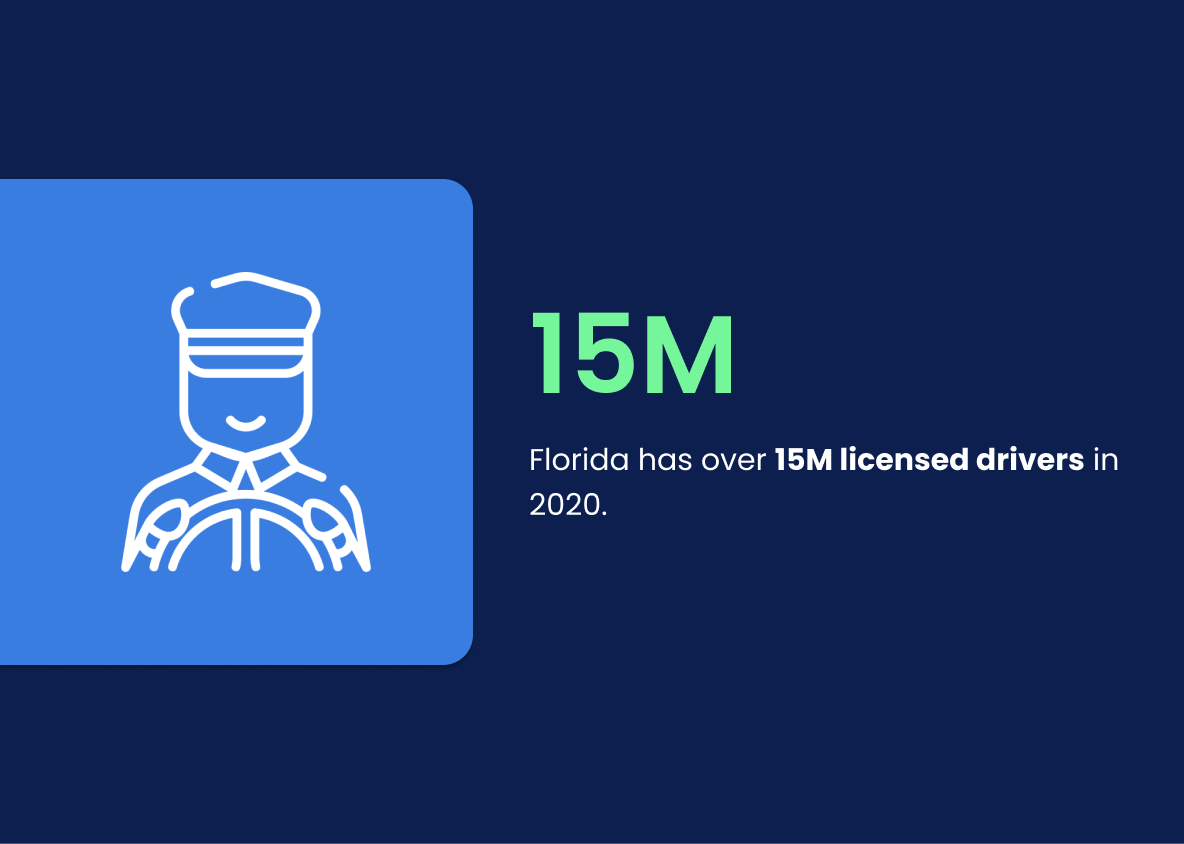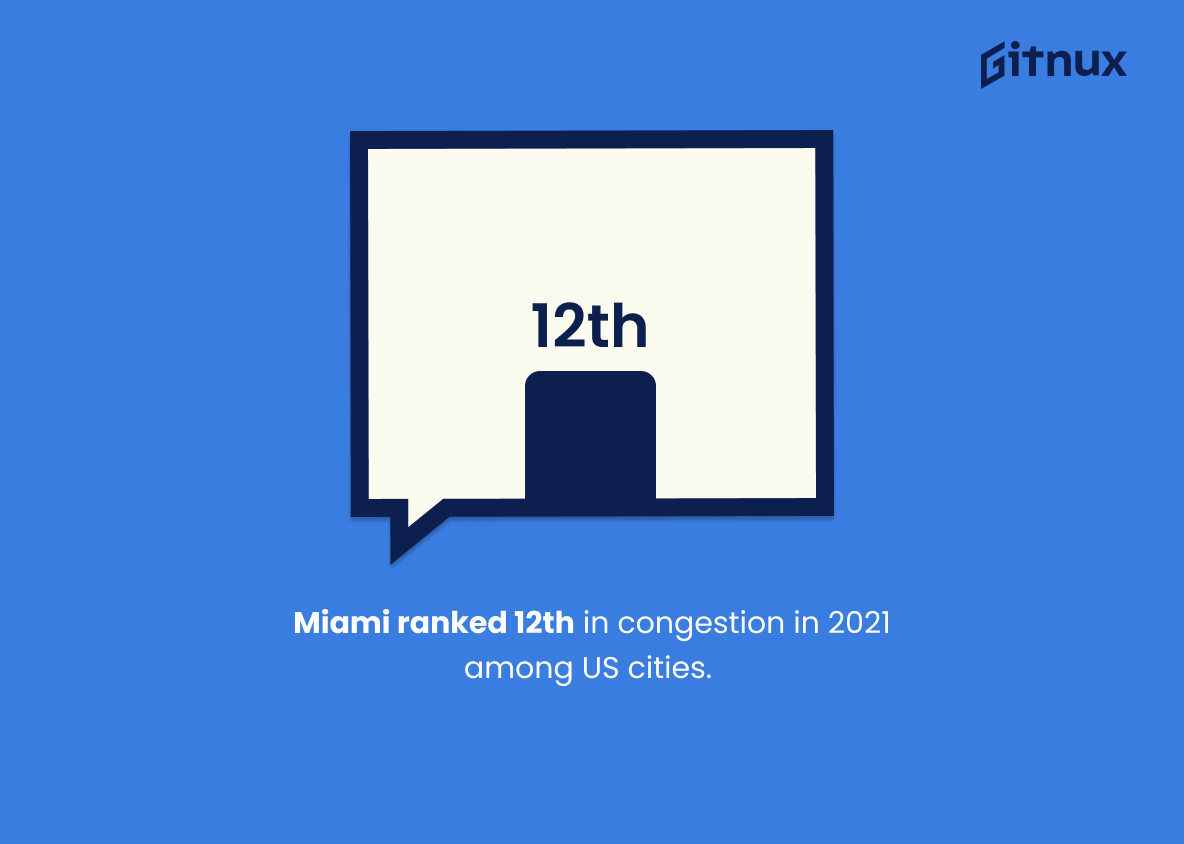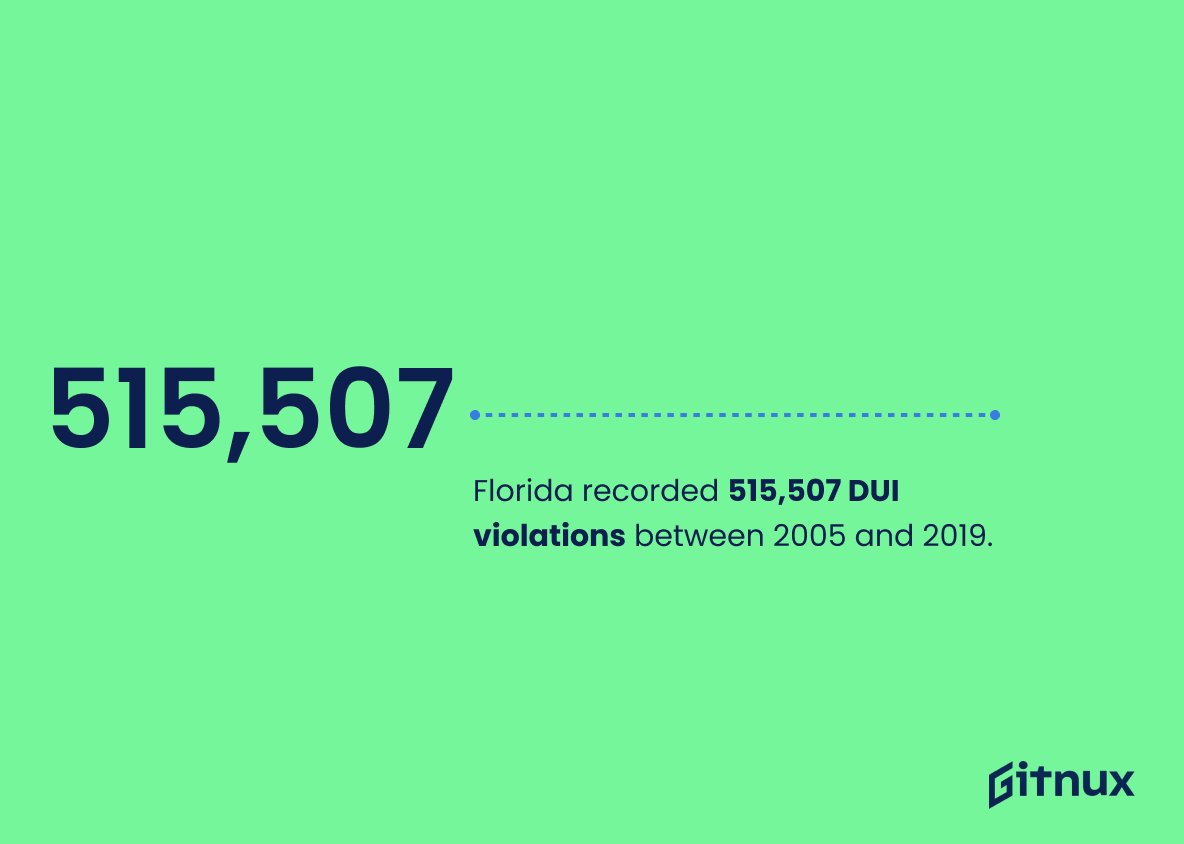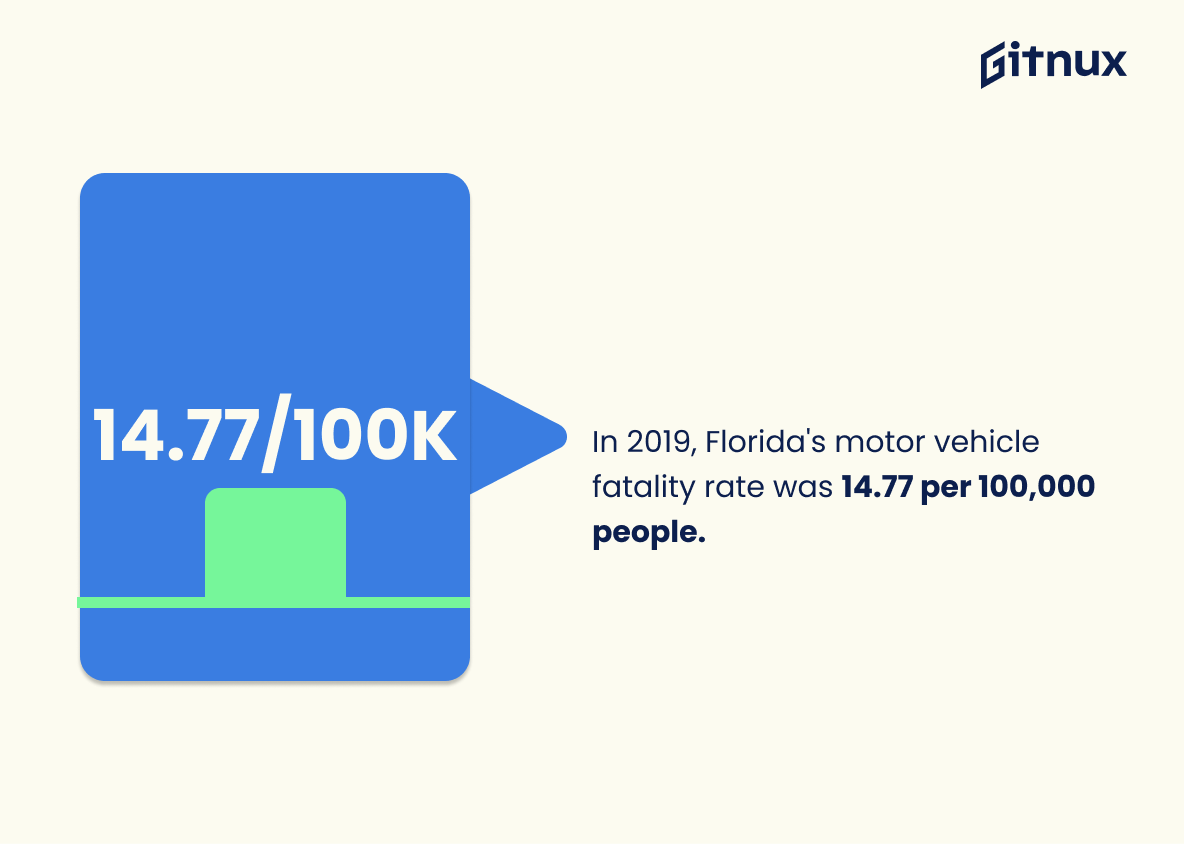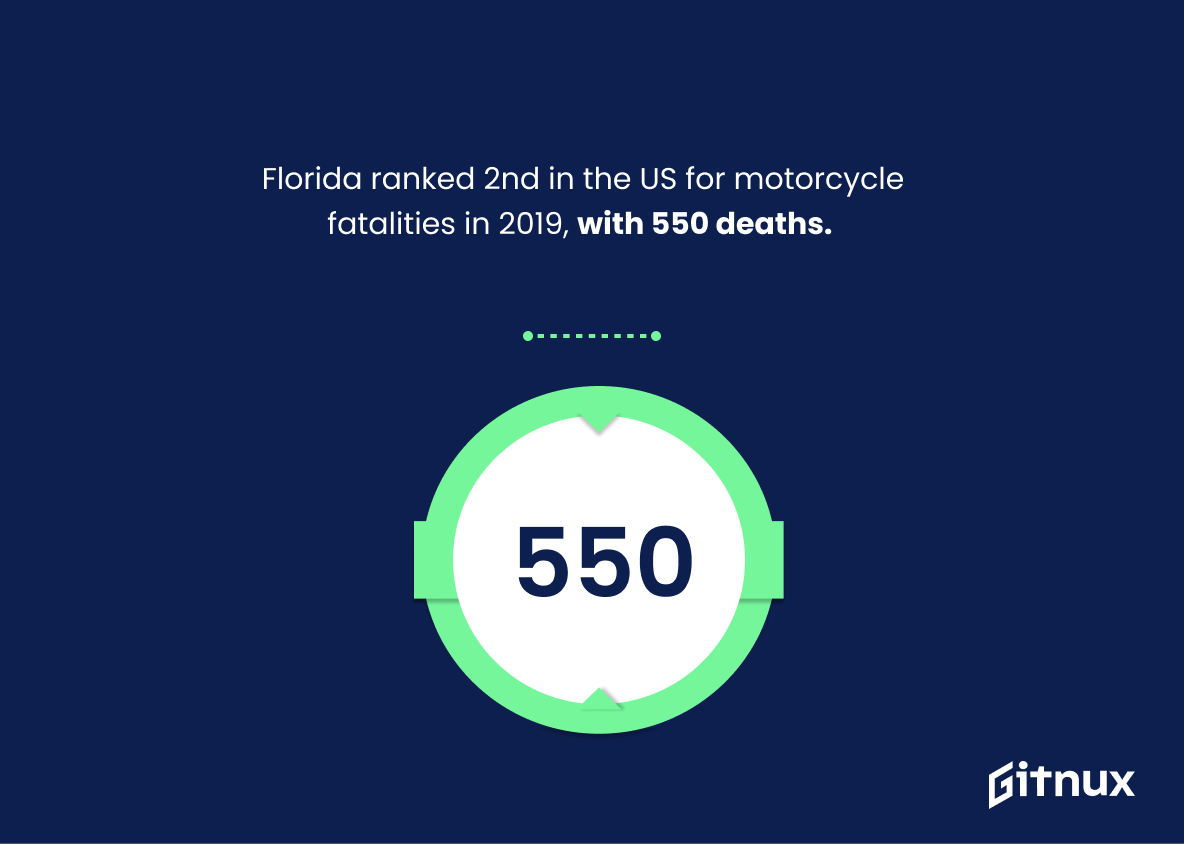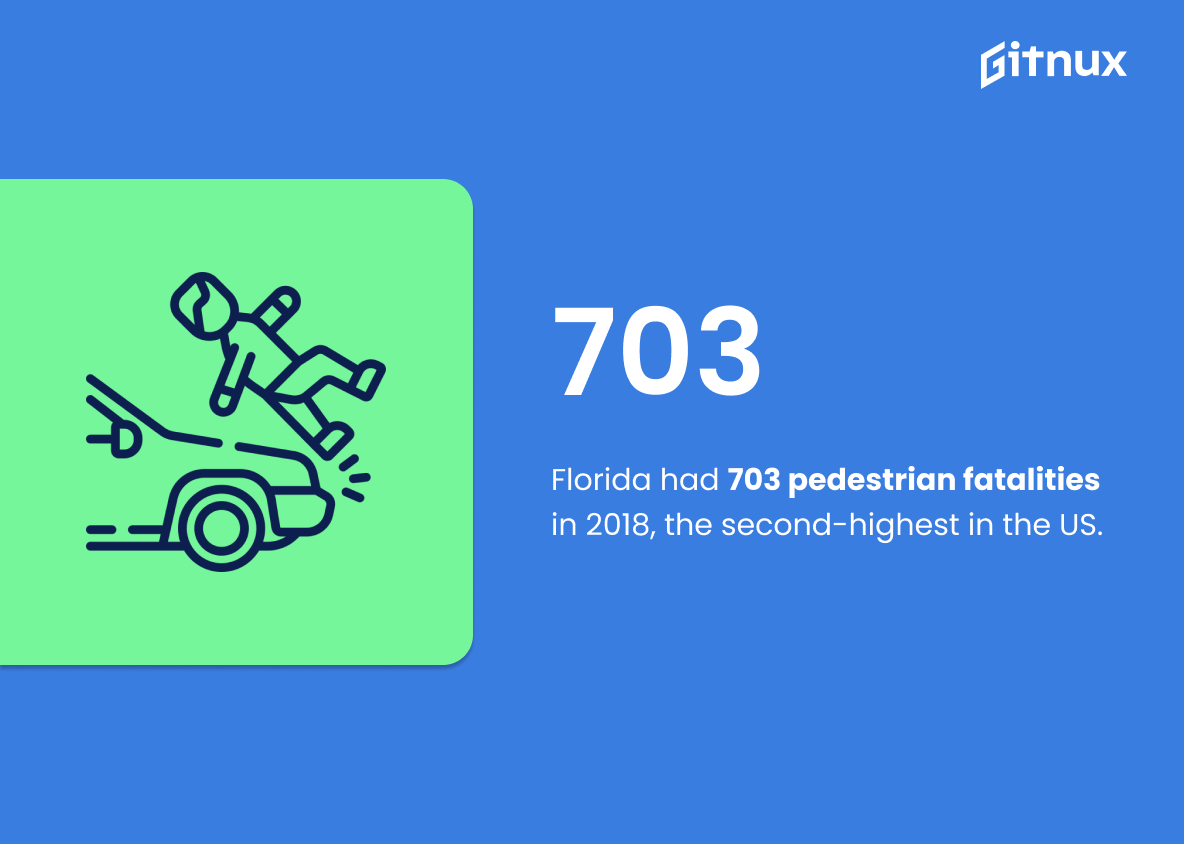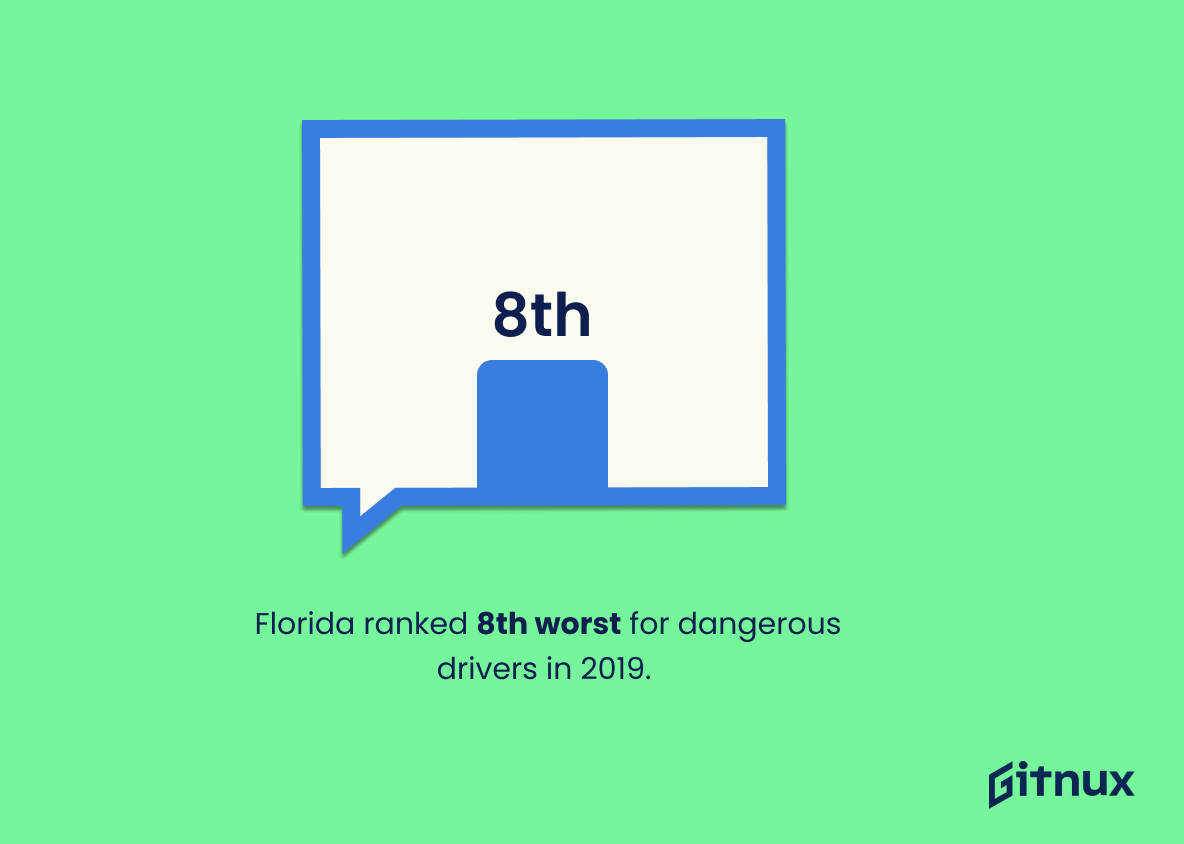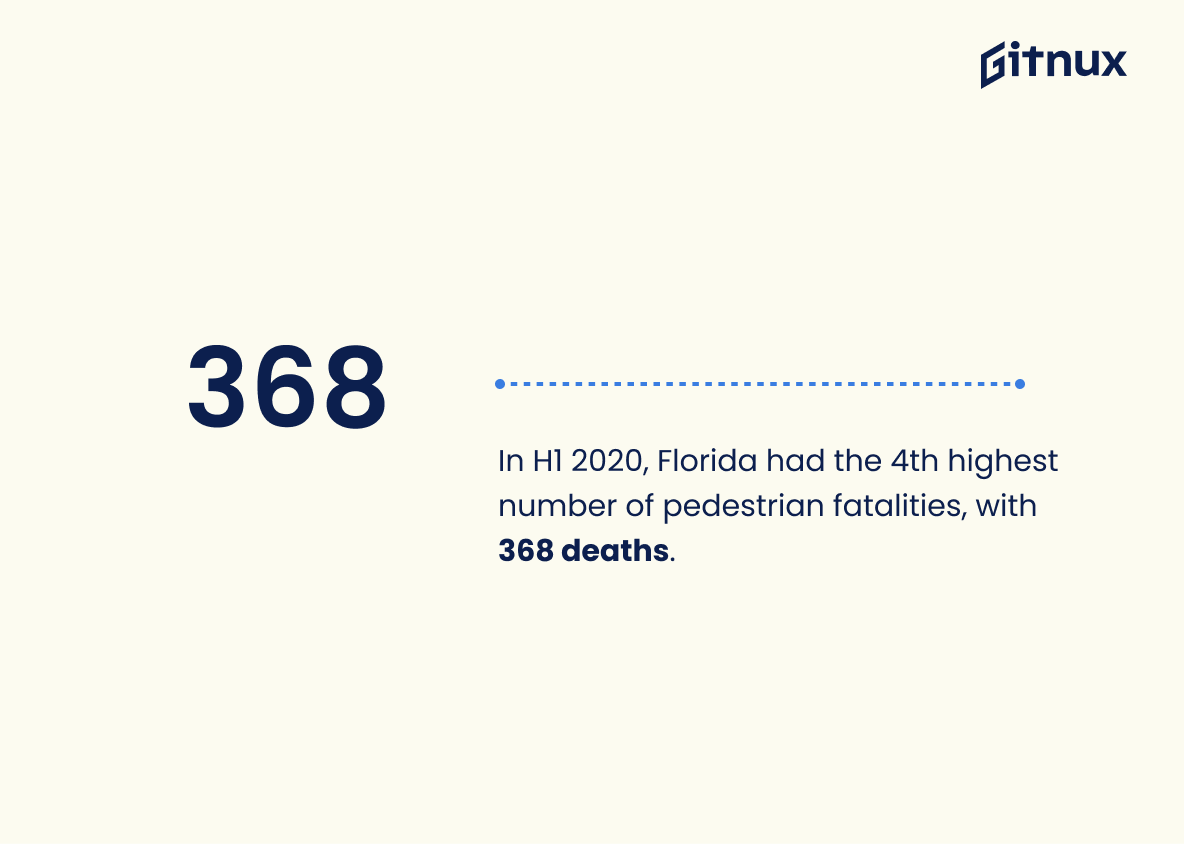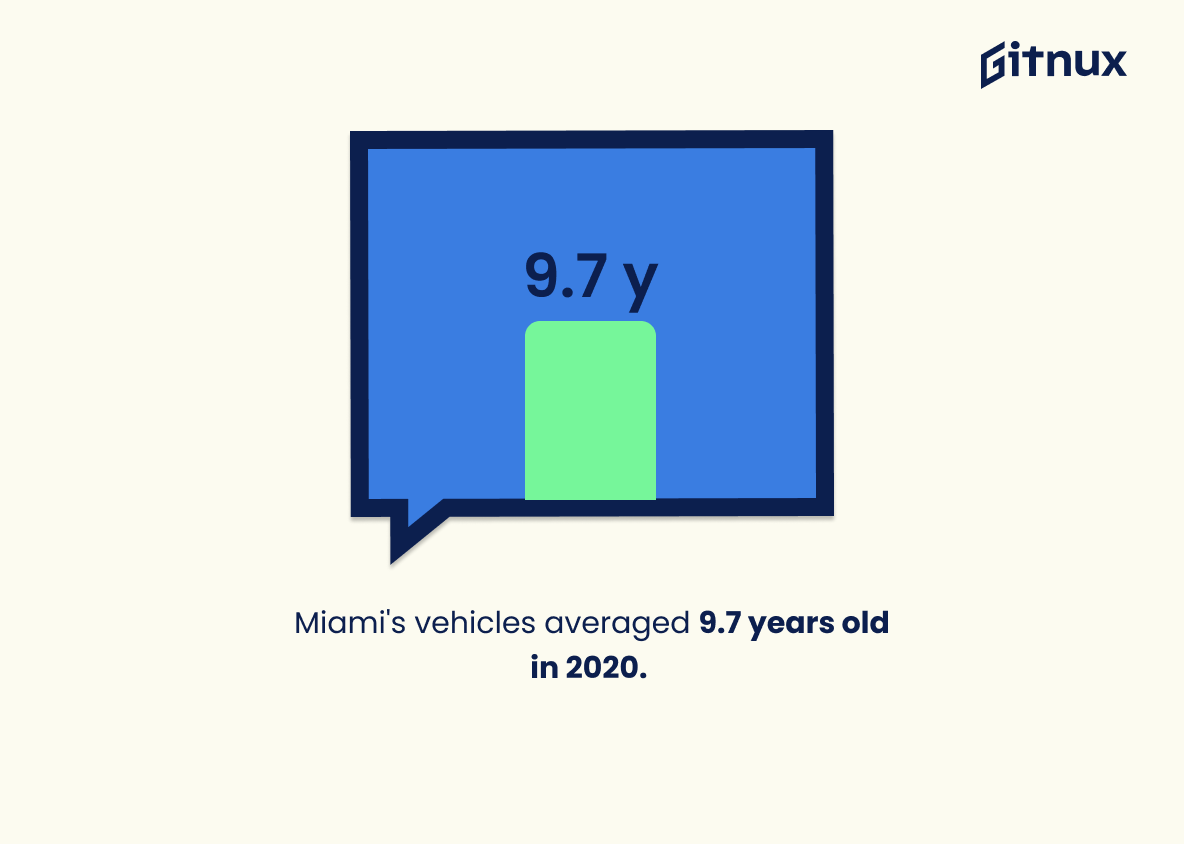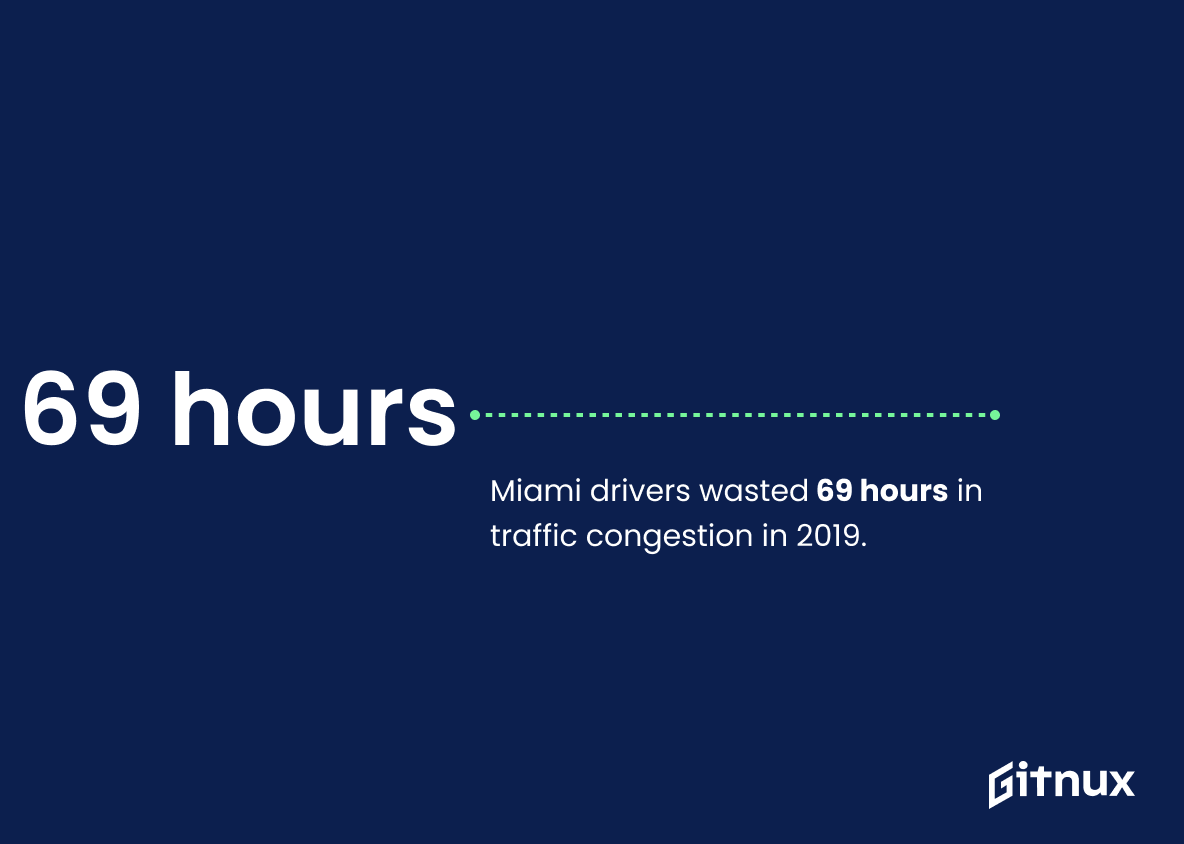Florida is a state with many drivers on the roads, and it’s important to understand how they are driving. From car crashes to DUI violations, there are plenty of statistics that can help us better understand Florida’s driving habits. In this blog post, we’ll take a look at 20 different statistics about Florida driving from 2018-2021. We’ll explore topics such as car crash numbers, licensed driver counts, traffic congestion levels and more. So buckle up and let’s dive into these fascinating stats about Florida drivers.
This statistic is a testament to the sheer number of drivers on the roads of Florida. It speaks to the importance of understanding the driving habits of Floridians and the need for safety measures to ensure the safety of all drivers. It also serves as a reminder of the importance of staying up to date on the latest driving laws and regulations in the state.
In 2021, Miami, Florida ranked as the 12th most congested city in the US.
This statistic is a telling indication of the state of driving in Florida, particularly in Miami. It highlights the fact that the roads in the city are becoming increasingly congested, making it difficult for drivers to get around. This can lead to longer commute times, increased stress levels, and more accidents. It is a reminder that Florida drivers need to be aware of the risks associated with driving in congested areas and take steps to ensure their safety.
Florida Driving Statistics Overview
Florida had 515,507 DUI violations recorded between 2005 and 2019.
The sheer number of DUI violations recorded in Florida between 2005 and 2019 is a stark reminder of the dangers of driving under the influence. This statistic serves as a powerful reminder of the importance of driving responsibly and avoiding the risks associated with driving while impaired.
According to the National Safety Council, in 2019, Florida had a motor vehicle fatality rate of 14.77 per 100,000 people.
This statistic is a telling indication of the safety of Florida’s roads. It reveals that, in 2019, the state had a motor vehicle fatality rate of 14.77 per 100,000 people, which is higher than the national average. This information is important to consider when discussing Florida’s driving statistics, as it provides insight into the risks associated with driving in the state.
Florida is ranked 2nd in the US for the number of motorcycle fatalities in 2019, with 550 motorcycle-related deaths.
This statistic is a stark reminder of the dangers of motorcycle riding in Florida. With 550 motorcycle-related deaths in 2019, it is clear that the state is not doing enough to protect its riders. This is an issue that needs to be addressed in order to ensure the safety of all drivers on the roads.
In 2018, there were 703 pedestrian fatalities in Florida, the second-highest among all states.
The fact that Florida had the second-highest number of pedestrian fatalities in 2018 is a stark reminder of the dangers of driving in the state. This statistic serves as a warning to drivers to be extra vigilant when behind the wheel, as even a moment of inattention can have devastating consequences.
In 2019, Florida was ranked as the eighth-worst state for dangerous drivers.
This statistic is a stark reminder of the dangers of driving in Florida. It serves as a warning to drivers to be extra vigilant when behind the wheel in the Sunshine State. It also highlights the need for improved safety measures to reduce the number of dangerous drivers on the roads.
In the first half of 2020, Florida ranked 4th among the states with the highest number of pedestrian fatalities, with 368 deaths.
The statistic that Florida ranked 4th among the states with the highest number of pedestrian fatalities in the first half of 2020 is a stark reminder of the dangers of driving in the Sunshine State. It highlights the need for drivers to be extra vigilant and aware of their surroundings, particularly when it comes to pedestrians. This statistic serves as a warning to all drivers in Florida to be mindful of the potential risks of driving and to take all necessary precautions to ensure the safety of pedestrians.
Fatalities in alcohol-impaired-driving crashes represented 28% of the total traffic fatalities in Florida in 2017.
The statistic of 28% of traffic fatalities in Florida in 2017 being attributed to alcohol-impaired-driving is a stark reminder of the dangers of driving under the influence. It serves as a warning to all drivers in Florida that the consequences of drinking and driving can be deadly. This statistic is a call to action for all drivers to make sure they are sober before getting behind the wheel.
In 2019, there were 2,951 traffic-related fatalities in Florida.
The tragic statistic of 2,951 traffic-related fatalities in Florida in 2019 serves as a stark reminder of the importance of safe driving practices. This number of lives lost is a sobering reminder of the consequences of reckless driving and the need for drivers to be aware of the risks on the road.
In 2017, speeding-related fatalities represented 27% of all traffic fatalities in Florida.
This statistic is a stark reminder of the dangers of speeding on Florida roads. It highlights the fact that a significant portion of traffic fatalities in the state are due to drivers going over the speed limit. This is a sobering statistic that should serve as a warning to all drivers to be mindful of their speed and to obey the posted speed limits.
In 2020, the average age of vehicles in Miami, Florida was 9.7 years.
This statistic is indicative of the fact that Miami drivers are driving vehicles that are relatively new. This means that the vehicles on the roads are likely to be in better condition, which can lead to safer driving conditions. Additionally, newer vehicles are more likely to have the latest safety features, such as airbags and anti-lock brakes, which can help to reduce the risk of accidents. This statistic is an important part of understanding the overall driving conditions in Florida.
In 2019, Miami drivers wasted an average of 69 hours in traffic congestion.
This statistic is a stark reminder of the reality of driving in Miami: the average driver spends nearly three days of their year stuck in traffic. This is a significant amount of time that could be spent doing something more productive or enjoyable. It also highlights the need for better infrastructure and traffic management in the city, as well as the importance of considering alternative modes of transportation.
Conclusion
The statistics presented in this blog post paint a vivid picture of the state of driving in Florida. From the high number of reported car crashes to the large amount of DUI violations, it is clear that there are many risks associated with driving on Florida roads. Additionally, Miami drivers experience some of the worst traffic congestion and highest rates for pedestrian fatalities among all US cities.
Furthermore, teenage drivers pose an additional risk due to their inexperience behind the wheel and lack of knowledge about road safety laws. While these facts may be concerning, they also serve as important reminders for motorists to practice safe driving habits at all times while on Florida’s roads.
References
0. – https://www.fars.nhtsa.dot.gov
1. – https://www.injuryfacts.nsc.org
2. – https://www.statista.com
3. – https://www.responsibility.org
4. – https://www.ihsmarkit.com
5. – https://www.ghsa.org
6. – https://www.responsibility.org
7. – https://www.carinsurancecomparison.com
8. – https://www.tomtom.com
